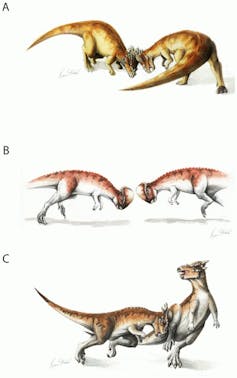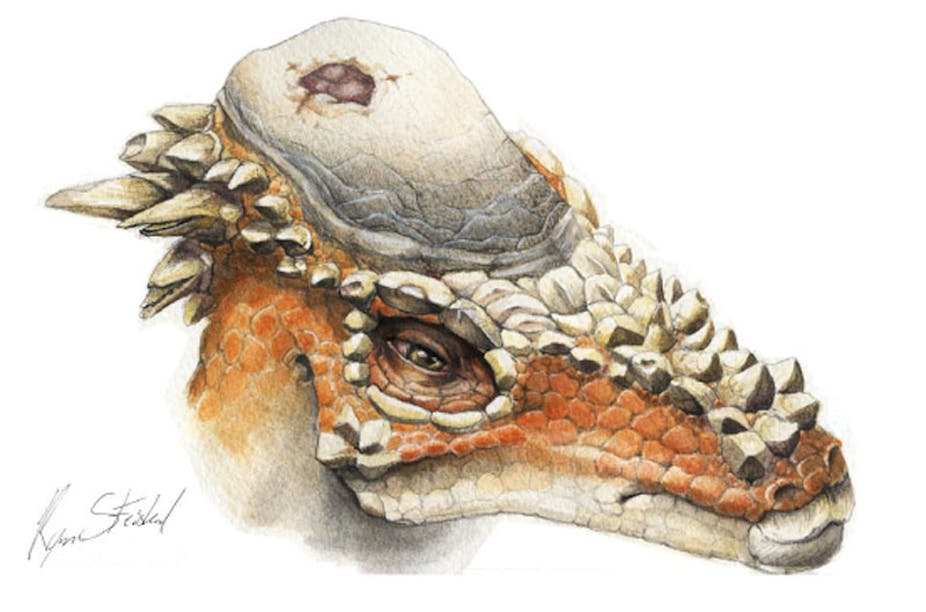Pachycephalosaurus is famous for its appearance in the movie Jurassic Park: The Lost World, where one is shown battering a man and his car. To achieve the feat the dinosaur used its greatly-thickened skull, which is one of its unique features. But for many years there has been a feud between researchers about the real-life role of this skull.
The dome-shaped skull is often decorated with knobs and spikes, which made some researchers think that the skull of pachycephalosaurs was for some sort of sexual display. But now, in a new study published in PLOS ONE, researchers have shown that pachycephalosaurs were into head-butting far before Zinedine Zidane. They used it as a weapon against rivals.
To work out whether pachycephalosaur skulls were for lovers or fighters, Joseph Peterson of the University of Wisconsin looked at the “wounds” of specimens recovered from palaeontological digsites. He found that more than 20% showed signs of having suffered from combat. More interestingly, most of the wounds appeared at the top of the skull. This bit of the skull could only have been used so often if it was used as a weapon. This pattern is seen across most of the 14 analysed species in a decent sample-size of 109 skulls.

There is a possibility that these “wound marks” were caused after the animal had died, for example by getting hit by pebbles in a river. But Peterson published another study testing this hyphothesis using a method called “experimental taphonomy”. The idea is to reconstruct the post-mortem activities that might have influenced an animals’ transformation into a fossil. This also involves factoring processes like tissue degradation.
Peterson created several casts of pachycephalosaur skulls of almost identical density and consistency as bone. He then plopped them in a flume which can mimic the flow of water and sediments within a stream. They found that the skull domes landed either on their top or bottom surfaces. If erosional damage did leave marks, you would expect to find scars on both sides of the skull. But that wasn’t the case with the skulls Peterson used for the analysis.
Such traumatic scars are arguably more value than the fossils they are scorched onto. Whereas a standard bone tells us about when an animal died, the traces left behind on these, such as bite marks or other combat wounds, give us an insight into the behaviour of animals that have been dead for 66 million years.
It also shows that palaeontology is a lot like trying to solve a rubik’s cube – we have a jumble of information, which needs to be solved to give us the story. In the process we are led down different paths or interpretations of that data – and sometimes we need to go backwards. But there are times when exquisite and rare fossils, and their accompanying studies such as this, give us a completed face to continue forward and discover ever more. Maybe one day we’ll be able to solve the cube.

